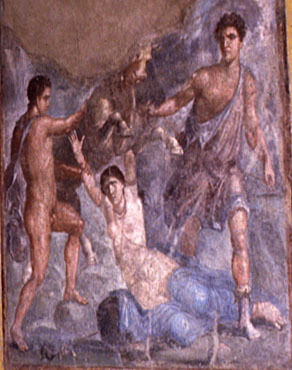execution

Emperors also used the munera in the arena as methods of executing prisoners condemned for serious crimes. The public nature of the execution made it degrading as well as painful and was intended to serve as a deterrent to others. Criminals could be forced to fight in the arena with no previous training; in such bouts death was a foregone conclusion, since the victor had to face further opponents until he died (such combatants were not, of course, professional gladiators). Another form of execution that was particularly popular was damnatio ad bestias, in which the condemned were cast into the arena with violent animals or were made to participate in dramatic reenactments of mythological tales in which the stars really died (as for example the myth of Dirce, killed by being tied to a bull, illustrated above).
Christians, who were considered to be guilty of sacrilege and treason because they refused to participate in rites of the state religion or to acknowledge the divinity of the emperor, were sometimes executed by damnatio ad bestias. However, although the Colosseum has in modern times been used as a symbol of Roman persecution of the Christians, there is no evidence of large-scale execution of Christians in this arena.

